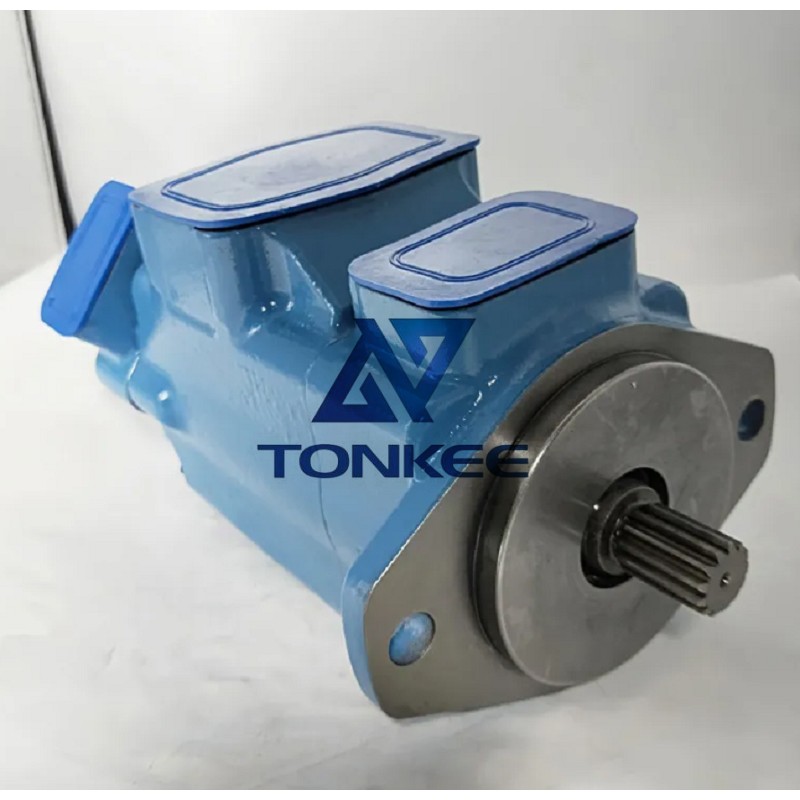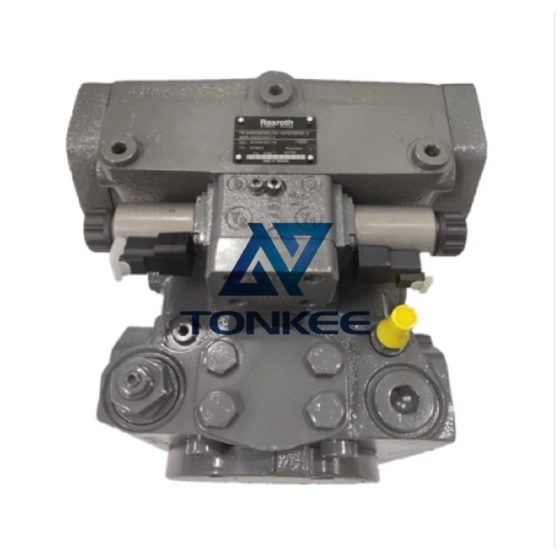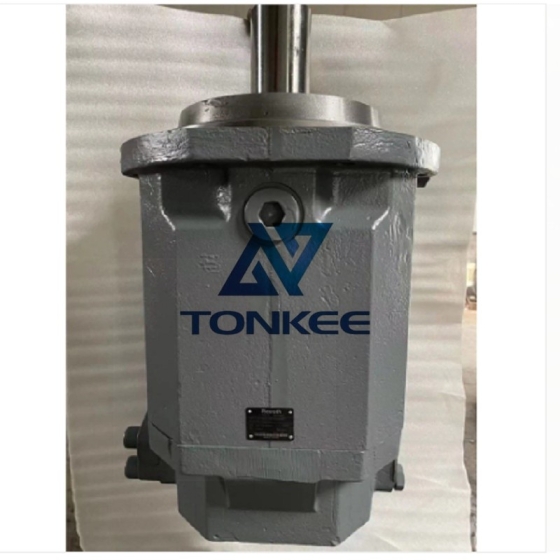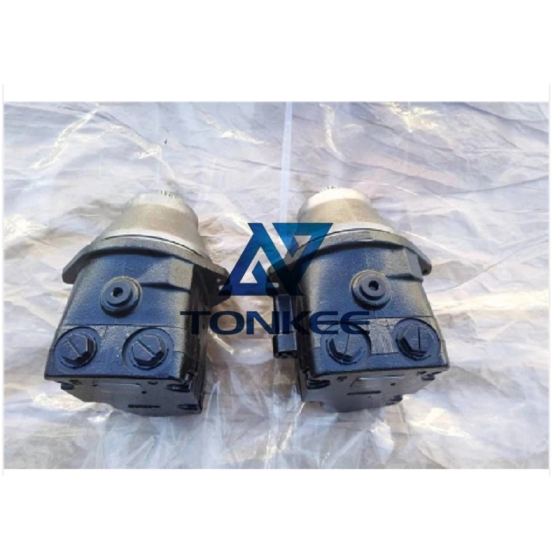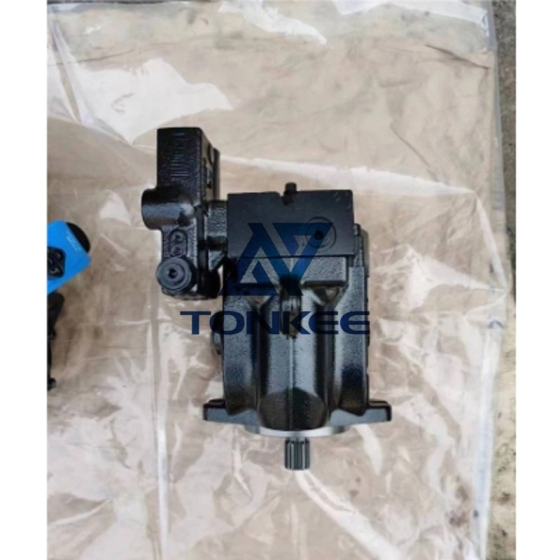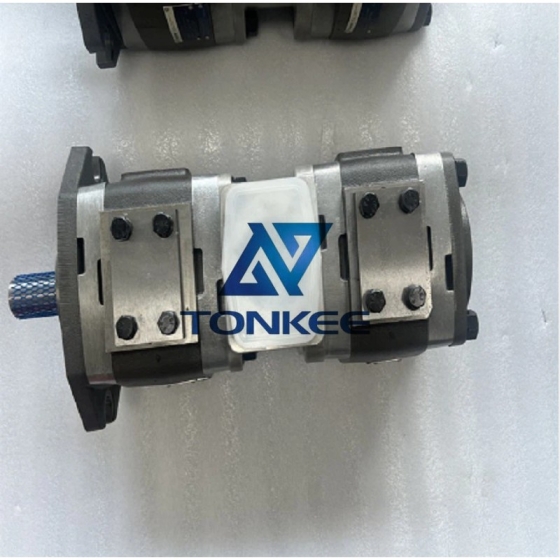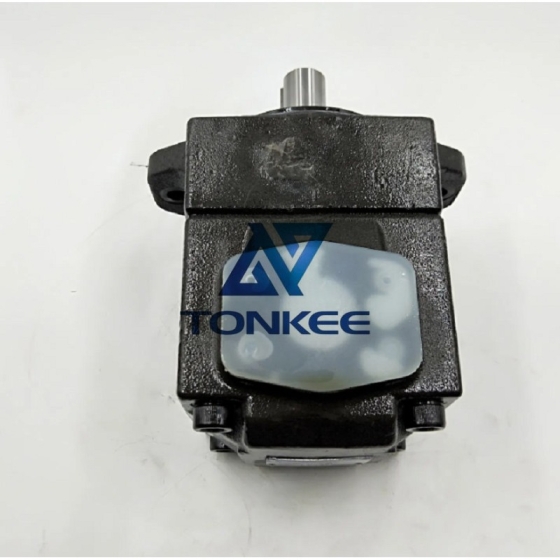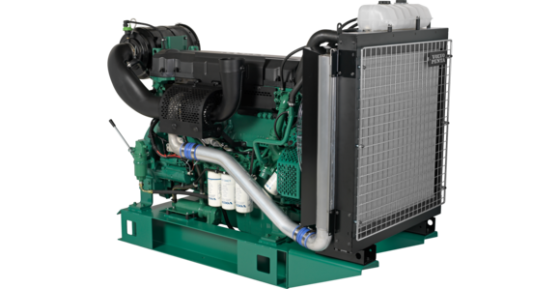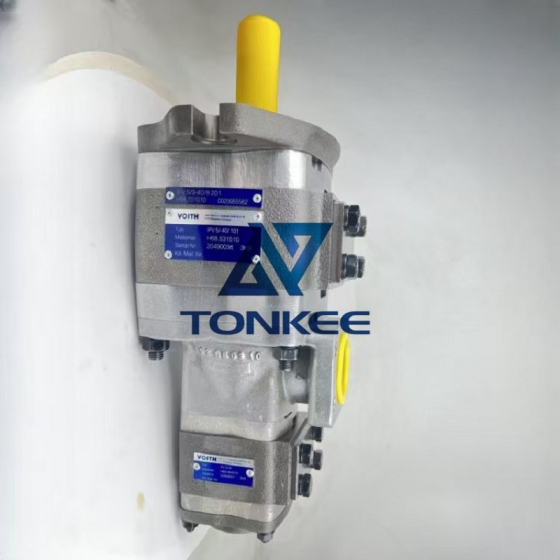Q1: What type of hydraulic pumps are the 20V, 25V, 35V, 45V series and their Q – suffix variants (20VQ, 25VQ, etc.)? What is the significance of the “Q” suffix?
English Answer: The 20V, 25V, 35V, 45V series and their Q – suffix variants are all fixed – displacement vane pumps, which are widely used in medium – and low – pressure hydraulic systems. They feature a simple structure, low noise, and high volumetric efficiency. The “Q” suffix in models like 20VQ and 25VQ typically indicates an optimized design for quiet operation. These Q – series pumps are equipped with improved vane materials, optimized cam ring profiles, and enhanced internal sealing structures, which can reduce the operating noise by 3 – 5 dB compared to the standard V – series pumps. This makes them particularly suitable for applications where noise levels are strictly controlled, such as in precision machine tools and indoor industrial equipment.
Q2: How to interpret the specific model codes of the vane pumps, such as 45V50A – 86C – 22R and 45V60A – 1B – 22R?
English Answer: The specific model codes of these vane pumps follow a standardized format, and each segment conveys important technical information:
- 45V: This is the basic series identifier. The “45” indicates the frame size or a key dimension related to the pump’s displacement and overall structure, şi “V” denotes the vane pump type.
- 50/60: These numbers represent the displacement of the pump, usually in cubic inches per revolution (in³/rev). De exemplu, “50” means a displacement of 50 in³/rev, şi “60” means 60 in³/rev. Displacement directly affects the pump’s output flow (flow = displacement × speed).
- O: This is a mounting configuration code. It specifies details such as the type of mounting flange (e.g., SAE flange) and the shaft extension design (e.g., keyed shaft or splined shaft) to ensure compatibility with different equipment installations.
- 86C/1B: These are engineering or customization codes. “86C” şi “1B” can indicate specific design modifications, such as the use of special materials for internal components (e.g., corrosion – resistant alloys), adjustments to the pressure relief valve settings, or compatibility with specific hydraulic fluid types (e.g., high – temperature hydraulic oil). The exact meaning may vary by manufacturer and is typically detailed in the product technical manual.
- 22R: This segment usually refers to rotational direction and port configuration. “22” is often associated with a specific combination of inlet and outlet port sizes and positions (e.g., SAE 22 port threads), şi “R” indicates a clockwise rotational direction when viewed from the shaft end of the pump.
Q3: What are the key performance differences between the standard V – serie (20V, 25V, etc.) and the Q – serie (20VQ, 25VQ, etc.) vane pumps?
English Answer: While both the standard V – series and Q – series vane pumps belong to the fixed – displacement vane pump category and share basic working principles, they have notable performance differences mainly in the following aspects:
- Noise level: This is the most significant difference. The Q – series pumps, with their quiet – optimized design, operate at a noise level 3 – 5 dB lower than the standard V – serie. De exemplu, a 25V pump may have an operating noise of around 75 dB at rated speed, while the 25VQ pump can reduce it to 70 – 72 dB. This is crucial for applications in noise – sensitive environments like laboratories or indoor assembly lines.
- Volumetric efficiency: The Q – series pumps generally have a slightly higher volumetric efficiency. Due to the improved sealing structures and more precise manufacturing tolerances, the Q – series can achieve a volumetric efficiency of 92 – 95% under rated conditions, compared to 88 – 92% for the standard V – serie. This means the Q – series pumps can convert more mechanical energy into hydraulic energy with less internal leakage.
- Service life: The Q – series pumps often have a longer service life. The use of high – wear – resistance vane materials (such as reinforced phenolic resins) and optimized cam ring surface treatments (like hard chrome plating) in the Q – series reduces internal component wear. In typical industrial applications, the Q – series pumps can have a service life extension of 15 – 20% compared to the standard V – serie.
- Cost: Correspondingly, the Q – series pumps have a higher cost. Due to the advanced materials and more complex manufacturing processes, the Q – series pumps are usually 10 – 15% more expensive than the standard V – series pumps of the same displacement.
Q4: What are the typical application scenarios for different displacement models in the V and VQ series, such as 20V/20VQ, 45V/45VQ, and specific models like 45V50A – 86C – 22R?
English Answer: The application scenarios of these vane pumps are mainly determined by their displacement, pressure – bearing capacity, and noise characteristics. Here are the typical application scenarios for different models:
- Small displacement models (20V, 20VQ): With a displacement usually around 20 in³/rev, these models are suitable for low – flow, medium – pressure applications. Typical uses include:
- Hydraulic systems of small machine tools, such as the clamping and feeding mechanisms of bench lathes and drilling machines.
- Auxiliary hydraulic circuits of agricultural machinery, like the lifting systems of small tractors and the steering systems of garden tillers.
- Light – duty industrial equipment, such as the hydraulic control systems of packaging machines and printing machines. The 20VQ model is preferred in indoor packaging workshops where noise control is important.
- Large displacement models (45V, 45VQ, 45V50A – 86C – 22R, 45V60A – 1B – 22R): With displacements ranging from 45 la 60 in³/rev, these models are designed for high – flow, medium – pressure applications. Typical applications include:
- Hydraulic systems of construction machinery, such as the boom lifting and bucket tilting circuits of small excavators and loaders. The 45V50A – 86C – 22R, with its specific mounting and port configuration, is well – suited for integration into the hydraulic systems of certain loader models.
- Heavy – duty industrial equipment, like the press cylinders of hydraulic presses and the conveyor drive systems of material handling equipment. The 45V60A – 1B – 22R, with its larger displacement (60 in³/rev), can provide sufficient flow for the rapid movement of large – diameter hydraulic cylinders.
- Marine auxiliary systems, such as the steering systems of small and medium – sized ships and the lifting systems of shipboard cranes. The corrosion – resistant design implied by the “86C” sau “1B” code in some models (like 45V50A – 86C – 22R) makes them suitable for the marine environment with high humidity and salt spray.
Q5: What are the key considerations for selecting and maintaining these vane pumps?
English Answer:
Selection Considerations
- Flow and pressure matching: Calculate the required flow rate of the hydraulic system based on the speed and action time of the hydraulic actuator (e.g., cylinder, motor). Select a pump with a displacement that can meet the flow demand (flow = displacement × pump speed). At the same time, ensure the pump’s rated working pressure is higher than the maximum working pressure of the system (with a safety margin of 10 – 15%) to prevent overpressure operation. De exemplu, if a hydraulic system requires a maximum pressure of 180 bar, a pump with a rated pressure of 200 – 210 bar (like most V and VQ series pumps) should be selected.
- Noise requirements: If the equipment is used in a noise – sensitive environment (such as a laboratory, hospital, or indoor assembly line), prioritize the Q – series pumps (20VQ, 25VQ, etc.) to meet the noise control standards. For outdoor or industrial environments where noise is not a major concern, the standard V – series pumps can be chosen to reduce costs.
- Installation and interface compatibility: Check the pump’s mounting flange type (e.g., SAE J526), shaft extension type (e.g., keyed shaft, splined shaft), and oil port size (e.g., SAE 16, SAE 22) to ensure they match the equipment’s existing installation structure and hydraulic pipeline connections. For specific models like 45V50A – 86C – 22R, confirm that the “O” mounting code and “22” port code are compatible with the equipment’s requirements.
- Fluid compatibility: Ensure the pump’s internal materials (such as vane materials, seal materials) are compatible with the hydraulic fluid used in the system. De exemplu, if using high – temperature hydraulic oil (operating temperature above 80°C), select a pump with high – temperature resistant seals (like Viton seals) and vane materials. Some models with special codes (e.g., “86C” in 45V50A – 86C – 22R) may be pre – designed for specific fluid types.
Maintenance Considerations
- Hydraulic oil management: Use hydraulic oil that meets the manufacturer’s specifications (typically ISO VG 32 or VG 46 anti – wear hydraulic oil). Regularly check the oil level, oil temperature, and oil quality. Replace the hydraulic oil every 2000 – 3000 operating hours and replace the oil filter every 1000 hours to prevent contaminants from entering the pump and causing wear to internal components (such as vanes and cam rings).
- Leakage inspection: Regularly check the pump’s oil ports, shaft seals, and flange connections for oil leakage. If leakage is found, promptly replace the damaged seals or gaskets. Excessive leakage not only reduces the system’s efficiency but also may cause environmental pollution and damage to other components.
- Noise and vibration monitoring: During operation, pay attention to the pump’s operating noise and vibration. If there is an abnormal increase in noise (e.g., a sudden increase of more than 5 dB) or obvious vibration, stop the machine immediately for inspection. Possible causes include insufficient oil suction, worn vanes, or a damaged cam ring.
- Storage and idle protection: If the pump is not used for a long time (more than 3 months), drain the internal hydraulic oil, clean the pump body, and fill it with rust – preventive oil. Store the pump in a dry, ventilated, and dust – free environment to avoid moisture and dust from entering the pump and causing corrosion or blockage.
 Logo -ul Tonkee Machinery
Logo -ul Tonkee Machinery


